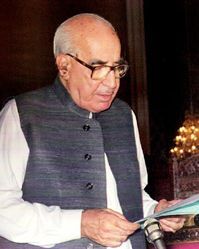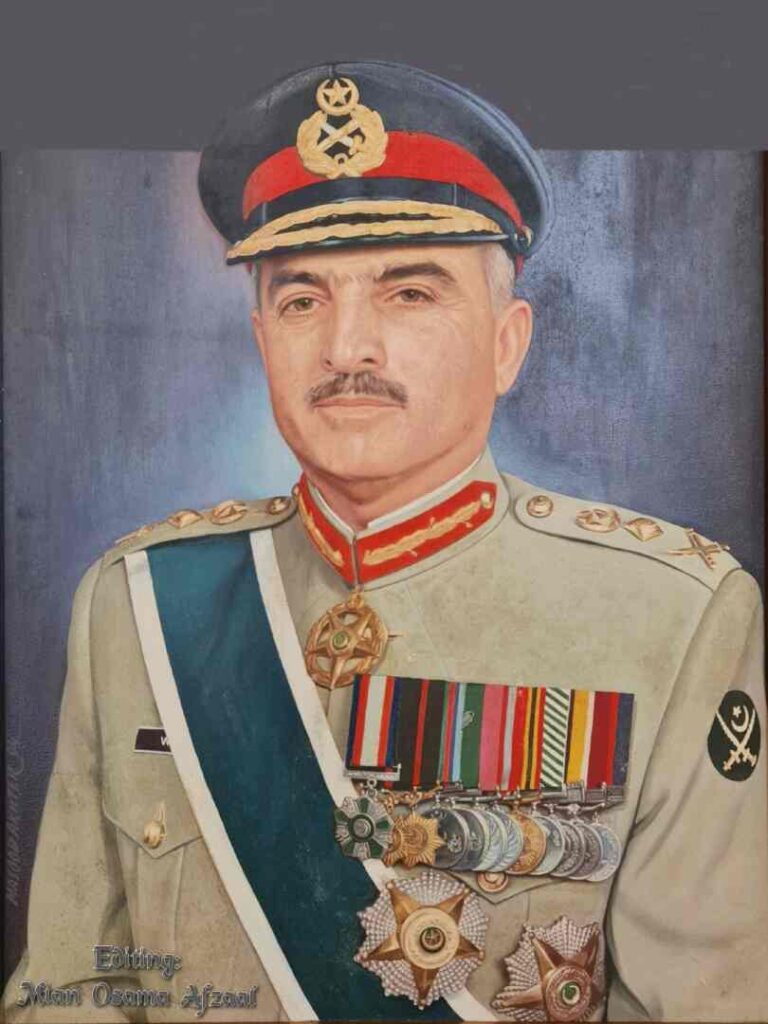In 1993, when Chief of Army Staff General Asif Nawaz Janjua died suddenly of a heart attack, the seniority list at that time included Lt. Gen. Rahm Dil Bhatti, Lt. Gen. Mohammad Ashraf, Lt. Gen. Farooq Khan, and Lt. Gen. Arif Bangash.
However, Prime Minister Nawaz Sharif superseded the four generals and appointed the fifth General Abdul Waheed Kakar as the Chief of Army Staff of Pakistan. It started Around the same time, Nawaz Sharif started efforts to abolish the 8th Constitutional Amendment.
As a gesture of goodwill, he appointed Opposition Leader Benazir Bhutto as the Chairperson of the Foreign Affairs Committee of the National Assembly.
When Nawaz Sharif took over the Muslim League
On March 18, 1993, former Prime Minister of Pakistan and head of the Pakistan Muslim League Muhammad Khan Junejo died in America.
His action alienated many Muslim League leaders and ideological workers. The disagreement between the President and the Prime Minister over the appointment of General Abdul Waheed Kakar continued to grow.
From the beginning of April 1993, under the leadership of Hamid Nasir Chatha, the Union Ministers began a series of resignations from the Cabinet.
Rumors began to circulate throughout the country that the President was going to dissolve the assemblies at any moment
On April 17, 1993, Prime Minister Nawaz Sharif addressed the nation on radio and television, in which he mourned the loss of his services to the nation in a very emotional manner and said that the President’s House had become a hotbed of conspiracies.
And that they will not show any weakness, neglect, or backsliding, they will not resign, dissolve assemblies, or take dictation.
Nawaz Sharif gave a speech on radio and television
This speech of Nawaz Sharif provided a strong justification to President Ghulam Ishaq Khan who was worried about dissolving the assembly and the next day on April 18, 1993, he addressed the nation on radio and TV.
Nawaz Sharif announced the dismissal of his cabinet and assembly while accusing him of corruption under Article 58 2B of the Constitution.
President Ghulam Ishaq Khan administered the oath of office of caretaker prime minister to senior parliamentarian Mir Balkh Sher Mazari in a dignified ceremony held at the President’s House that evening.
The caretaker cabinet led by Balkh Mazari consisting of Hafiz Nasir Chatha and Sardar Farooq Ahmad Laghari was later expanded in this cabinet by the then Speaker National Assembly Captain Retired Gohar Ayub Khan as the custodian of the Assembly against the President’s move. Approached the Supreme Court
The Supreme Court bench headed by Chief Justice Syed Naseem Hasan Shah issued an order on May 26, 1993, for the unconditional restoration of the National Assembly and the Nawaz Sharif government after a five-week hearing.
In the context of the court decision, caretaker Prime Minister Mir Balkh Sher Mazari handed over power to Nawaz Sharif on May 26, 1993, after ruling for 39 days.
With this decision of the Supreme Court, where President Ghulam Ishaq Khan faced the resignation, the political situation of the country continued to deteriorate.
On May 27, 1993, the day after the restoration of the government, Nawaz Sharif said in his speech after taking the vote of confidence from the National Assembly that democracy in Pakistan has now been restored in the true sense by the grace of God. And the undemocratic tactics could not succeed. In the same speech, he expressed the hope that for the first time, he felt that the days of Pakistan were about to change.
And no one will be able to remove Pakistan from this pillar of democracy After the restoration of the government by the Supreme Court and the vote of confidence from the National Assembly, it seemed that after overcoming all his problems, Nawaz Sharif got new courage and new strength.
Now all the obstacles have been removed from their path or will be removed in the coming days, but on the same day, a delegation of prominent journalists of the country met President Ghulam Ishaq Khan.
President Ghulam Ishaq meeting with eminent journalists

And asked them whether there would be any form of stability and stability in the country in the coming days
The President heard this question and read a Persian poem by Allama Iqbal while addressing the delegation member Mujibur Rahman Shami.
In which, translating the lion, it was said that in the old man’s garden, there are thousands of grape vines from which wine has not yet been distilled.
The message of this interesting poetic reply was very interesting as many trials were waiting for the Prime Minister in the coming days
Within 39 days of the dissolution and restoration of the federal government, two important events of far-reaching political significance took place in Punjab. The first incident was the no-confidence motion against Chief Minister Punjab Ghulam Haider Wain.
The Muslim League government, which had a comfortable majority in the province, would never have been overthrown if a rebel group had not emerged from within the same party.
The Punjab Muslim League government ended and Manzoor Watto became the Chief Minister
The support of the People’s Party was immediately available to this group consisting of about one and a half dozen members of the Provincial Assembly under the leadership of Mian Manzoor Ahmed Wattoo.
As a result, the no-confidence motion was successful and Manzoor Ahmed Wattoo became the Chief Minister
The second change was the change of Punjab Governor Mian Muhammad Azhar. After his graduation, Choudhary Altaf Hussain, a well-known politician of Jhelum, was made the governor
How Governor Chaudhry Altaf defeated the Prime Minister with his skills and political tactics is a long story. Perhaps sensing the danger, the Prime Minister tried to move a no-confidence motion against Manzoor Ahmad Wattoo as a preemptive measure.
The Chaudhry brothers, especially Chaudhry Pervez Elahi, completed their homework in this regard and shifted the Members to Islamabad to keep them from switching loyalties.
Meanwhile, a motion of no confidence was presented against the Chief Minister so that the environment could be made favorable for the federal government by bringing changes in Punjab. Before the no-confidence motion reached the assembly secretariat, Chief Minister Punjab Mian Manzoor Ahmed Wattoo advised Governor Chaudhry Altaf Hussain to dissolve the assembly.
The Muslim League challenged in the court the issue of signing the decree of dissolution of the Assembly by the Governor of Punjab, but at this stage, the opposition political forces of the Muslim League and especially the People’s Party challenged the Lahore High Court during the hearing of the case. By deepening, it created a situation of pressure on the court
In front of the Lahore High Court, the rain of loot and the procession of looters continued all day on the Mall Road, and the invasion of Abdul Hafeez Pirzada on the judges inside continued.
It was during this time that the term ‘Bat Lote’ first became popular in the country for political disloyalty in an environment in which the political environment of the country was also under tension and due to tactics like siege, the court could not give such a decision.
With his help, there was no satisfaction for Mian Nawaz Sharif in Punjab, then the federal government did not win this case in Punjab, so the federal government and its officials in the government there started to make life difficult.
The house of the Sharif family in Raiwand and the house of Chaudhry Shujaat Hussain in Lahore were blockaded, and even the visitors of the two leaders were disturbed.
Disturbed by the situation, Nawaz Sharif and Chaudhry Shujaat Hussain were forced to seek the help of Rangers to protect their homes.
Under the patronage of the President and other stakeholders, the Punjab government closed contact with the federal government in these measures, so the federation tried to hand over the authority of the province directly to the federation.
For this purpose, it was decided to implement Article 234A of the Constitution so that the administration of Punjab province could be taken over by the federation.
For this purpose, the federation has appointed the former governor of Punjab, Mian Muhammad Azhar, as the administrator of the province, along with the transfer of the chief secretary and IG police.
Thus, President Ghulam Ishaq Khan refused to support this decision, thus the second attempt to control the problem-causing province also failed.
Meeting of Governor Punjab and Corps Commander Lahore
Apart from the actions of the Governor with the support of the President, the role of the army was also exceptional in the failure of this attempt
As soon as the information about Article 234A of the Implementation of the Constitution was received, Governor Chaudhry Altaf Hussain contacted the Corps Commander Lahore and informed him that the federal government was going to take such an action which has no legal status. Directed all concerned agencies including Rangers to refrain from doing any illegal work
Pressure was put on the federal government from other provinces
On the other hand, Mian Nawaz Sharif was also warned by the powerful circles that he would avoid any such action. These conditions were enough to make the federal government angry, but despite this, it managed to destroy other provinces. Sindh has indicated to stop the traffic coming from Punjab
While the border, which is now called Khyber Pakhtunkhwa, started talking about shutting off the electricity of the federal capital and Balochistan gas.
In early July 1993, the Pakistan People’s Party and the All Parties Conference of the opposition announced that if the Prime Minister did not announce new elections, they would march towards Islamabad on July 16, 1993.
Financial and administrative support of the Punjab government was the backbone to ensure this long march
Corps Commander’s Conference on Holiday
The situation took such a shape that there were talks of martial law in the country. These rumors were strengthened by the extraordinary meeting of the Corps Commanders’ Conference, which was held on the occasion of the two holidays of Muharram, namely the 9th and 10th of Muharram. The situation in the country was discussed in detail in the ongoing Corps Commanders’ Conference
Many possibilities were considered, but the final decision was made according to the opinion of the head of the army, General Abdul Waheed Kakar, that the solution to the crisis should be found within the constitution itself.

Immediately after the commando conference at 11 pm, the army chief met the president and the prime minister and suggested that new general elections be held to resolve the issue.
When the time of the long march approached, the Army Chief sent a plane to visit People’s Party chief Benazir Bhutto in Rawalpindi and met her.
On this occasion, General Kakar asked Benazir Bhutto to announce the end of the Long March and say that it was done at the behest or intervention of the army, after which the famous meeting was arranged. Both the Prime Minister and the President agreed to resign
Finally, the President of Pakistan and the Prime Minister agreed to dissolve the Pakistan Assembly
July 18, 1993, was a historic day in Pakistan’s politics when the country’s president and prime minister left their positions together.
The Prime Minister advised the President to dissolve the National Assembly, then the President announced the dissolution of the National Assembly and resigned from his post.
With the consensus of Nawaz Sharif and Benazir Bhutto, Moin Qureshi, former executive director of the World Bank, was made caretaker prime minister, while Senate Chairman Wasim Sajjad assumed the post of acting president.
